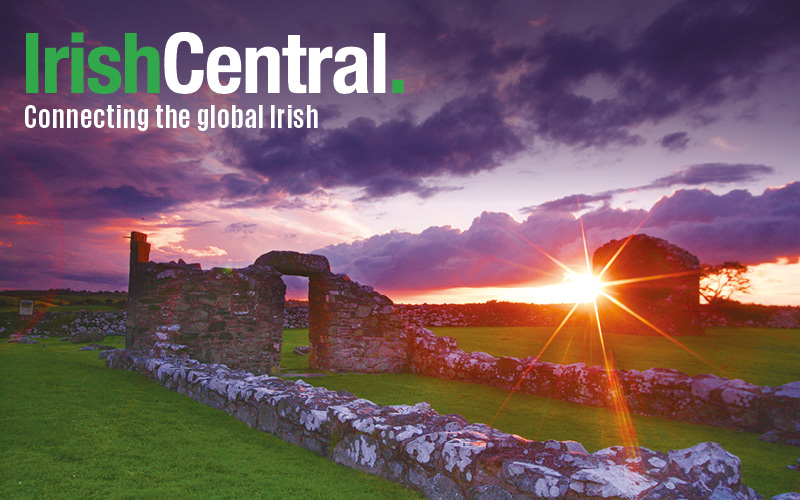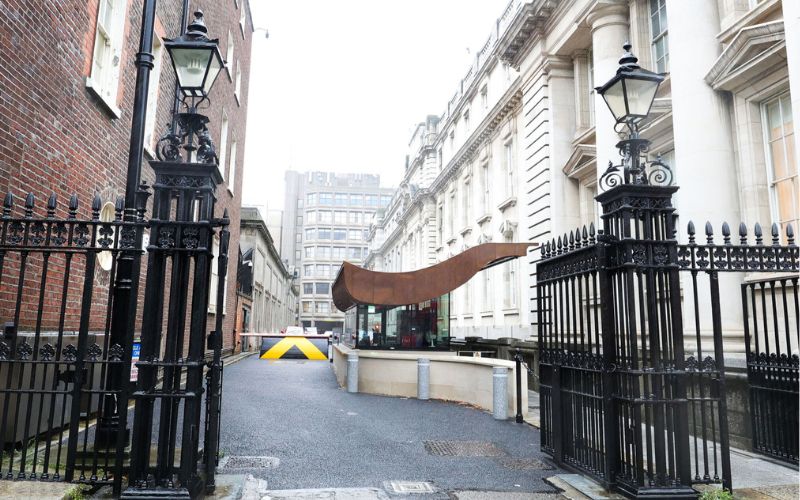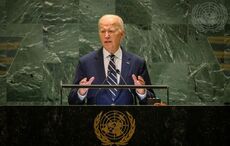On May 23 in Ireland, voters are going to the polls to elect city and county councillors in what are known as the local elections and to elect 11 individuals to represent Ireland’s three constituencies in the European Parliament.
Commentators often refer to these elections as the mid-terms, coming as they do roughly halfway between general elections, which must take place at least every five years and at which members of the Oireachtas (Ireland’s parliament) are chosen. Voters in Northern Ireland held their European and local elections on Thursday, May 22.
Without delving into the complexities of European federalism or of the inner workings of the European Union, a significant percentage of our laws are enacted in Brussels, not in Dublin, and two of the three constituencies in the Irish Republic are larger in size than other European countries. As such, a seat in the European Parliament is a high and powerful political office.
Ireland’s three constituencies – there were formerly four – are Dublin, Midlands North West and South. While the first is self-explanatory and consists of the entire city and county of Dublin, the other two are vast geographically.
Midlands North West encompasses counties from Galway in the west to Kildare in the east and to Donegal in the north. The South constituency runs from Wicklow in the east all the way down to Kerry and takes in the counties in between. The issues for voters in Dublin are largely the same; naturally, however, residents of places as far apart as the Dublin commuter belt and the Atlantic coast have some quite divergent concerns.
The new, sprawling constituencies, together with widespread anger about politics in the electorate which has hurt the traditional parties (i.e., Fianna Fáil, Fine Gael, Labour) and aided Sinn Féin and Independents, have made for huge and politically diverse fields of candidates and some very interesting, perhaps unprecedented political dynamics. And the Irish proportional representation-single transferable vote system, in which voters rank each candidate in order of preference and which allows for an individual’s votes to be transferred as more preferred candidates are elected or eliminated from contention, adds another intriguing wrinkle to the process.
What follows is a brief analysis of each constituency and some predictions as to who will be declared the winners after the weekend counts. Although there are clear front-runners in all three constituencies, there are equally hard to call dogfights for the last seat in each, rendering the business of prognostication a daunting task for even the most seasoned of Irish political watchers. Moreover, while nearly all of the candidates have brought an interesting perspective to the campaign trail, this analysis will consider only those who the polls show to have a reasonable chance of winning a seat.
In Dublin, the polls repeatedly indicate that two candidates are in the lead in the battle for three seats: Brian Hayes, a sitting TD (member of Irish parliament) of the lead government party, Fine Gael, and political neophyte Lynn Boylan of the ascendant Sinn Féin. It’s highly likely that they will take the first two seats. The polls show a four-way showdown for the final seat.
The four candidates are: Emer Costello of Labour, the junior party in government, who is a current member of the European Parliament (MEP); Dublin city councillor Mary Fitzpatrick of Fianna Fáil, a longtime political foe of ex-Taoiseach (Irish prime minister) Bertie Ahern; Eamon Ryan, a former TD and leader of the Green Party; and Nessa Childers, daughter of former Irish President Erskine Childers and a sitting MEP.
Costello and Ryan will benefit from some transfers from other left wing candidates in a constituency with a sizable left of center vote. But each – Costello for being a member of Labour whose critics allege it has betrayed its ideals while in this government and Ryan, as a minister in the last, still wildly unpopular, Fianna Fáil-led government – will be damaged by their parties’ purported acquiescence in a right-wing agenda in government. Fitzpatrick’s animosity towards Bertie Ahern won’t hurt her, yet the Fianna Fáil label may still be too poisonous in Dublin and won’t help her. Conversely, Childers is likely to receive a decent first preference vote and will attract transfers from across the political spectrum, and from the demographic groups most likely to cast ballots.
In Midlands North West, the polls reveal that outgoing MEP Mairead McGuinness of Fine Gael and Matt Carthy, a Sinn Féin Monaghan county councillor, are running strongly and will take the first two seats. Three candidates – Pat “the Cope” Gallagher, a Fianna Fáil MEP from Donegal; Marian Harkin, a present Independent MEP; and Luke “Ming” Flanagan, an Independent TD – seem to be in the shake up for the last two of four places. McGuinness’s running mate and party colleague, Jim Higgins MEP, is just a shade behind.
It is hard for me to believe that Fianna Fáil, whose standing has improved in the polls since its general election wipe out in 2011, won’t take a seat in this constituency, which contains some of its traditional strongholds. Gallagher is personally very popular and a proven vote getter. He has a running mate, Senator Thomas Byrne, from the other end of the new constituency whose transfers should put Gallagher over the top.
As for the last seat, most observers cite the latest polling data and conclude that “Ming” Flanagan will prevail. I disagree. Flanagan, a different sort of character whose political career was born on a “legalize cannabis” platform and was elected a TD in 2011 after an economic meltdown, appeals to many people who are disenchanted with politics and politicians. His “anti-insider” persona suffered, particularly in his Roscommon base, when charges of some of his own self-interested actions emerged. Moreover, he is dependent upon those least likely to vote to turn up and give him their first preferences.
Harkin, on the other hand, is widely respected as a hard working MEP (she was previously a TD) who listens to her constituents and is a steadfast advocate for their interests in Europe. She has a loyal personal following and will also benefit from the not inconsiderable bloc of anti-abortion voters in the rural areas of Midlands Northwest. I believe she may win a seat by a whisker, but it will be very close. Turnout will be decisive. And Higgins can’t be written off altogether.
In the South, there is no doubt that the incredibly popular, long time Cork MEP Brian Crowley of Fianna Fáil will top the poll. Newcomer Liadh Ní Riada of Sinn Féin and the former President of the GAA (Gaelic Athletic Association), Sean Kelly of Fine Gael, will likely take the second and third positions in this four seater.
The final seat will probably be contested by intra-party rivals, Simon Harris TD and Senator Deirdre Clune of Fine Gael. The polls consistently show Clune just slightly ahead. Harris will undoubtedly benefit from the fact that he is the only major party candidate from the eastern end of the constituency. He will do very well in his home county of Wicklow and the neighboring counties of Wexford and Carlow. It is unlikely, however, that he will be as popular with Kelly voters as will the Cork-based Clune, who will also attract transfers from other candidates from that voter rich county. Lastly, Harris’s age – he is just 27 and was only elected a TD in 2011 – may give some voters in his home territory pause to think that he might be a young man in too much of a hurry.
In sum then, I believe the winners, in alphabetical order, will be as follows: in Dublin, Boylan, Childers and Hayes; in Midlands North West, Carthy, Gallagher, Harkin, McGuinness; and in the South, Clune, Crowley, Kelly and Ní Riada.
Again, making predictions in elections like these is a foolhardy business. But if I have egg on my face when the winners are declared, I won’t be the only one. And no matter what, it’s bound to be a fascinating weekend.




Comments